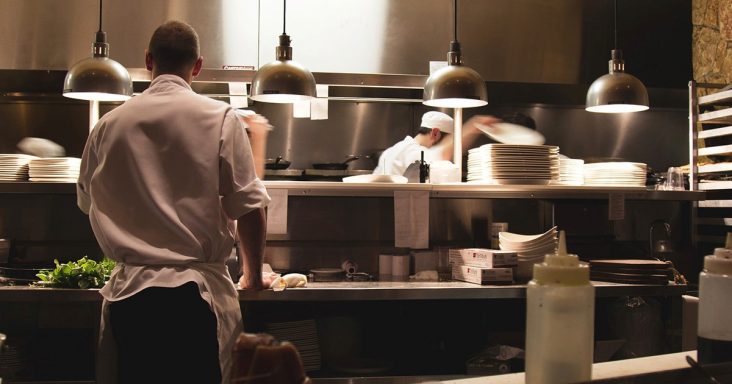Restaurants post best holiday sales since 2015
by January 11, 2019 11:11 am 383 views

Robust consumer spending at retail during the 2018 holiday season resulted in the best December same-store sales growth (2%) the restaurant industry has seen since August 2015, according to Dallas-based TDn2K Black Box Intelligence. The report released Friday (Jan. 11) highlights the industry’s strong overall year with seven consecutive months of positive growth in 2018. That compares to only two positive months recorded in 2017.
TDn2K’s Black Box Intelligence report was based on weekly sales from over 31,000 locations representing more than 170 brands and nearly $72 billion in annual sales.
“Perhaps the most encouraging news for the industry came in the form of the unusually strong fourth quarter results,” said Victor Fernandez, vice president of insights and knowledge for TDn2K. “Same-store sales growth during the fourth quarter was 1.4 %, which was the highest in over three years.”
He said the industry’s recovery from a longer-term perspective also continued to show some upward momentum. Same-store sales during the fourth quarter increased by slightly over 1.45 compared with the same period in 2016. Two-year sales growth had been negative for the past eight consecutive quarters.
The report found annual same-store sales growth for 2018 was 0.7%. Though only moderate growth, this is also the best performance by the industry since 2015, Fernandez reiterated. The report also indicated overall guest counts at restaurants continue to erode despite Americans spending more on dollars on food away from home.
Fernandez said an acceleration in restaurant prices compared with groceries and a growing field of competing dining options continue to translate into what seems to be the new normal in chain restaurant performance. Even when sales are up, the industry continues to suffer from declining same-store guest counts.
TDn2K reported same-store traffic growth during December was 0.9%, while traffic declined 1.6% for the entire fourth quarter, compared to a 0.4% decline in growth in the previous quarter.
“Although the importance of persistently declining guest counts cannot be overlooked, there are some small signs of recovery in the latest results,” said Fernandez. “Two-year same-store traffic growth was down 3.6% during the fourth quarter of 2018. The average two-year growth for the first three quarters of the year was down 5.8%.”
The restaurant industry sales growth relates to fewer consumers spending more. The average guest checks increased by 3.1% year-over-year in the fourth quarter. During the previous three years, average guest check growth never topped 2.5%.
“While many brands utilized heavy discounting and price promotions in 2017, average guest checks only grew by 1.9% during the year for the industry. Restaurants seem to have eased off this tactic in 2018,” Fernandez said. “Guest check growth for this year was a significantly higher 2.6% pointing to price increases and/or an upward shift in product mix.”
Fernandez said the fast-casual and casual dining options saw the most growth in same-store sales year-over-year after dismal results in 2017. He said from a consistency point of view the real winners in 2018 were the segments with the highest average checks — upscale casual and fine dining. Not only did both of these segments have strong positive growth in 2018, but they are also the only industry segments that were able to sustain positive sales growth averaged over the last three years, Fernandez added.
The report also outlined the biggest challenge for the restaurant sector in 2019 which is deemed to be staffing concerns amid the tight labor market. Fernandez said running short handed equates to gains on the sales revenue side of the business but can be disruptive to operations over time. Operators around the country express difficulty finding the enough employees to fully staff their restaurants.
According to TDn2K’s latest People Report Workforce Index, 74% of companies reported increased difficulty finding qualified hourly employees. Perhaps most concerning, 59% said they are having a tougher time hiring people to manage those restaurants. The report found worker turnover remains elevated across the industry being proportionally higher for restaurant managers than hourly workers.
Looking into 2019 economist Joel Naroff said businesses are still hiring and is causing wages to rise faster.
As a result, consumer spending is holding up and should continue to do so, which is good news for the restaurant industry. However, most indicators point to a moderation in growth going forward, but only from strong to a more sustainable, yet decent, pace. A recession does not appear to be likely anytime soon and if a major slowdown occurs, it probably would not come before late in the year. Though the moderate growth should support continued improvement in restaurant sales, it will also lead to lower unemployment rates and even greater pressure on wages,” Naroff said.
Some predictions by the national restaurant industry for 2019 include experimentation with drone deliveries and more automation from robotic burger flippers to ordering kiosks to help combat labor shortage.
